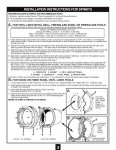Maybe someone who has been at this for a while can answer this question. I have been following this thread for a while. Posted this before, but maybe have been overlooked.
Please see below:
Is there a testing error when the FC becomes that high with the TF-100? I believe in the past I read the higher you go on the ladder, the probability of testing error increases. With that being said (if accurate), does it make sense to allow the FC to drop to around 10 and then perform the OCLT test? Please see comment below as I would like understand this better. For me, luckily I found TFP early enough and have never had any issues with passing the overnight test.
I agree that the OCLT being performed at no more than an 8 hour time frame is a pretty good timeframe where accuracy can be ensured.
From what I have learned, and others may also be able to explain this better for you as well. It is recommended that the OCLT be performed at the Shock level following a SLAM. It is not recommended to allow the FC drop to 10ppm which could in turn allow algae regrowth, or backslide, if the SLAM itself is not fully complete.
There are times If the numbers are being consistently held, yet the Op is teetering on the overnight FC loss just barely enough to prevent passing for several days, and the water is clear, and the cc is 0, that I've seen some have them drop the FC level to test OCLT, but as a rule, due to possibility of reoccurrence from incompleted SLAM, etc. this is not the best, nor suggested way to perform an OCLT following a SLAM. (IMO It is better to be safe than sorry because if the Fc level is allowed to drop before the SLAM is complete this could cause the OP to backslide causing them a lot more time, work, frustration, and chlorine).
I read a really good article on here the other day that I'll try to relocate for you, if I can, that explains that even with the margin of error at the higher shock levels, if the Slam is complete, the overnight FC loss will be 1.0ppm or less, regardless of the FC level the OCLT is being checked at.
I hope this helps to kind of explain why it is recommended that his, and others are needed to remain at shock level until OCLT is passed. Have a nice day.




